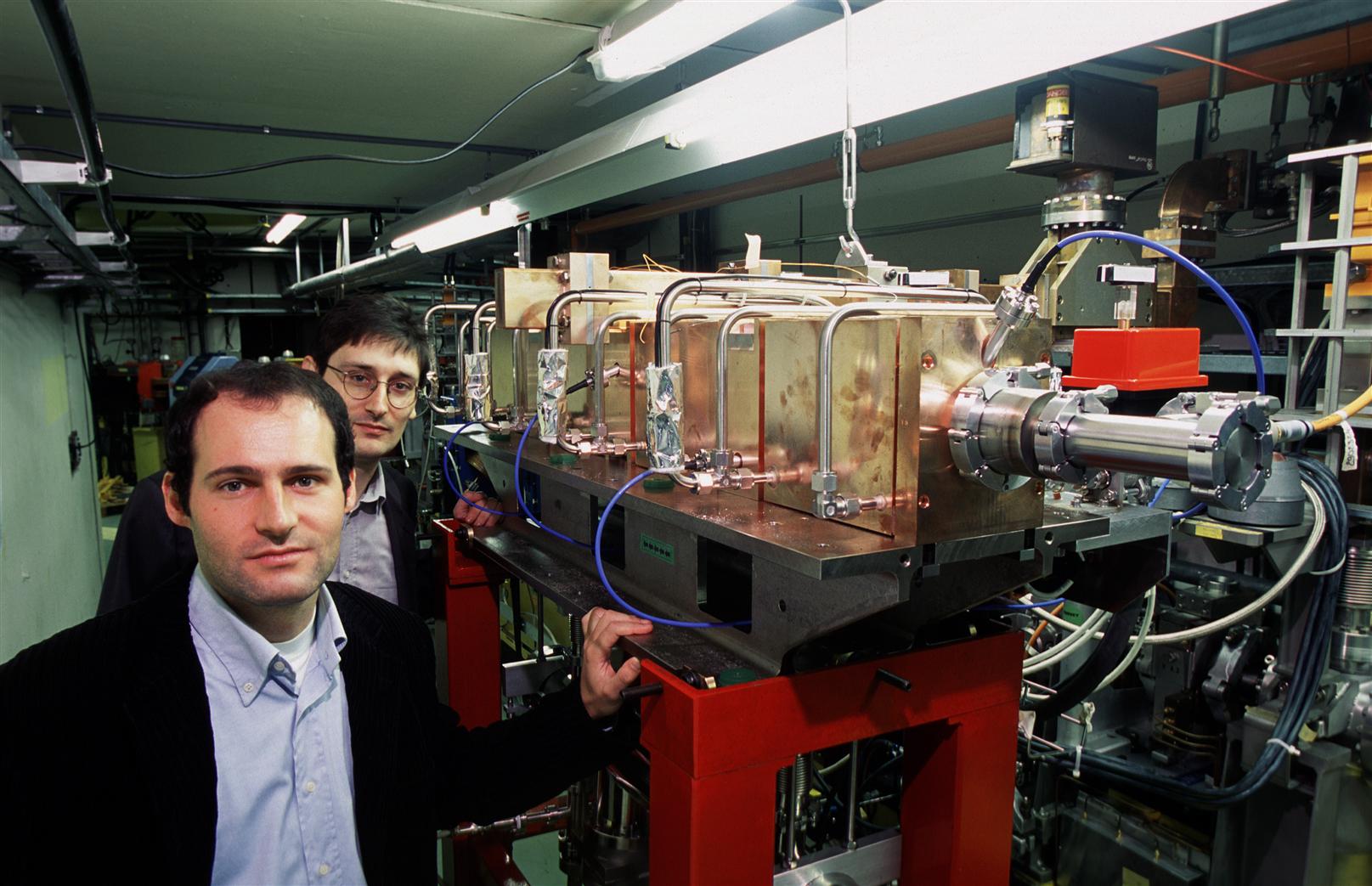CERN technology in the service of medicine
The prototype of the first module of the LInac BOster (LIBO) has been constructed and tested at CERN. This new medical accelerator offers new perspectives in deep-seated tumour treatment.Accelerator technology developed at CERN is set to bring about important advances in cancer therapy. The linac booster - LIBO - project aims to build a 3GHz proton linear accelerator to boost to 200 MeV the energy of the beam from 50-70 MeV cyclotrons, existing in several hospitals and laboratories. This will allow deep-seated tumours to be treated (see box). The prototype of the first LIBO module has just passed high power RF tests at CERN.

Two members of the LIBO collaboration, Riccardo Zennaro and Paolo Berra, with the first LIBO module installed in the LIL tunnel.
The LIBO idea goes back to 1993 when it was conceived by CERN's Ugo Amaldi, founder of Italy's TERA foundation. From the beginning, Mario Weiss, a former CERN staff member has led the project. A decisive step was taken in 1998 when a collaboration between TERA, CERN, and the Universities of Milan and Naples and their INFN sections was established. Within this collaboration and with the support of CERN members from EP, EST, ETT and PS Divisions, the copper structure of the LIBO prototype has been designed, built in the central workshops, and brazed in the vacuum brazing laboratory. Low power RF measurements confirmed the soundness of the design and construction, and showed a good field distribution at the nominal frequency, unusually high for a low energy proton linear accelerator (see graph).
An artist's view of a possible ensemble of a cyclotron, a nine-module Libo and a gantry which brings the beam to any part of the human body.
Good field uniformity was achieved along the axis of the four accelerating tanks that make up the LIBO module.
After a successful vacuum test by LHC experts, and as soon as LEP was shut down at the beginning of November last year, the module was installed in the LEP injector linac (LIL) building and powered up using a spare klystron.
By December 7, the module performed much better than expected, reaching an accelerating gradient of 25 MV/m, well in excess of the design value of 15 MV/m.
The next step for LIBO is to move this module to INFN laboratories in Catania, where it will be coupled to a 60 MeV cyclotron for beam acceleration tests to be carried out next summer.
According to the original design, the LIBO contains nine modules for a total length of about 15 meters. As a consequence of the successful RF tests, the possibility of operating at higher accelerating fields and reduced accelerator length will be analysed. The requirement for a variable output beam energy will be maintained in any future design.
The LIBO collaboration is now seeking industrial partners in order to develop the technology to use this new medical accelerator in hospitals that already have a 50-70 MeV cyclotron.
| |

